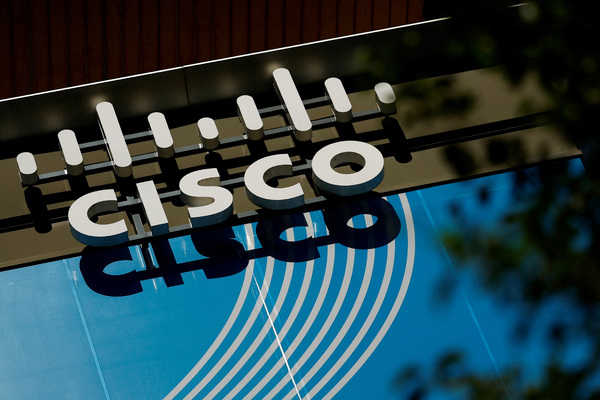M&A: carving out new opportunities

Aynsley Vaughan and Ben Fielding at TMF Group describe preparing for success in a revived M&A market
In recent years, merger and acquisitions (M&A) activity has been somewhat subdued as dealmakers grappled with the implications of a drawn out bear market.
However, we’re now seeing a definite upswing. In Q4 2023, the market started showing signs of recovery, with many of the year’s largest deals announced - including Broadcom’s $69 billion acquisition of VMware.
There are three main factors driving the revival in dealmaking: an uptick in financial markets prompted by falling inflation and a likely reduction in interest rates; pent-up demand; and a pressing strategic need for companies to transform their business models.
This momentum has carried over into 2024, with a significant increase in corporate carve-outs in particular.
The market bites back
Carve-outs - where a parent company sells off an entire division or business unit, turning it into an independent entity, or selling it to a third-party buyer - have become a major part of the M&A landscape.
They’re growing in popularity as they open up new ways for market players to raise or return cash, maximise shareholder value, optimise a company’s operations, or change the strategic direction of a group.
They are often a win-win. The selling company can refocus on their core business parts, while defocusing on elements of the business they maybe bought with cheap debt and no longer fit their model. On the flip side, you have private equity (PE) firms with record amounts of dry powder looking to buy up and transform previously unloved parts of a business into high-growth vehicles.
Major corporates all seem to be doing it, or planning for it, at present, regardless of geography or sector. Whether it’s divesting brands, or certain countries, or indeed whole divisions, the common thread is that they are taking action to cut through to the high-margin parts of their business.
Whilst exciting and often beneficial to all involved, carve-outs require a huge amount of planning and preparation if they’re to succeed. They can pose operational risks to buyers if post-integration plans aren’t well crafted in advance of a deal closing. This is because there are a host of challenges to navigate, including enhanced due diligence considerations, financial barriers, and readiness issues.
A TMF Group survey revealed 78% of corporates, and 64% of PE firms, believed delays in deal completion could have been avoided with more preparation.
Thinking beyond the TSA
When working on a carve-out, the parties can enter into what’s known as a transition services agreement (TSA) that governs the former owner’s temporary provision of services to the new company.
It’s important to consider whether a TSA is needed, the scope it will cover, and the duration. A properly negotiated TSA gives management time to focus on deal completion while also helping to reassure employees about the future prospects of the carve-out. They can be particularly useful in terms of IT issues - for example, it takes time to get a new enterprise resource planning (ERP) system in place, so a TSA can help to bridge that gap.
But TSAs on their own aren’t a silver bullet. Sellers will typically want the TSA to be as expensive, short, and limited in scope as possible to encourage the carve-out to become quickly independent; after all, they want to forget about it and focus on their core business. This can add stress and friction into a deal.
Whether it’s for six months, a year, or 18 months, a TSA is also tying parties into everything they are trying to move away from. Whilst it buys time to decouple systems and processes, it also essentially just kicks the can down the road - and you will still arrive at the cliff edge and need to know what comes next.
So what else do you need to consider?
Split the part from the whole up front
As a seller, you’re offering something that’s thoroughly embedded within your structure. If you can split everything out internally first, you will get better value because it’s more digestible for the buyer. If it’s still all wrapped together, the buyer has to work out how to separate things, and this can lead to complications and wreck a deal. The market is sophisticated, and PE firms know exactly what they want to buy – so the days of light due diligence are over. This also extends to data hygiene; with more disclosures required across more sectors as regulations tighten, a buyer will expect to have all the information they will need in one place.
Assess the perimeter of the deal
Once you’ve determined the countries and products that are in the mix, you need to work out what your legal entities will look like in each jurisdiction to cover the full perimeter of the deal. You need to meet regulatory obligations whilst also providing the necessary resources. If a company has 1,000 people in a country but after the carve-out there will be 10, then who is going to do the accountancy and payroll? You may be moving from an extensive HR team to just one HR manager - will they need external support from a partner on the ground? You’re creating a much leaner, meaner machine that will chase growth - but it may need a push start to get going.
Adopt a realistic timetable
Naturally, the deal takes precedent. You have to agree a price, and then a date - but then you have to consider how you will get over the line in time. This becomes complicated, and every country is different. For example, in the UK you may be able to set up a company within a day - but then it could take three months to get a business bank account. And what if you need to set up an entity in China, or Singapore? That can take a lot longer. We’ve seen many deals get delayed and fall over because the involved parties haven’t thought ahead. If you have a TSA for six months, but incorporating entities, getting registrations in place, and getting payroll up and running will take nine months, then it’s not going to work - and will be expensive to extend.
Be aware of your dependencies
Don’t neglect the impact on people. You’re potentially taking hundreds or thousands of employees out of a large corporate environment and plunging them into an unknown. They will have to adapt to new owners and a new culture - as well as a new payslip. Don’t underestimate the change management aspect of a carve-out, and the time it takes. And you will have to negotiate this with a trimmed down senior management team.
When it comes to corporate carve-outs, the path to success lies in robust preparation and having an established presence on the ground. Working with the right partner who understands the multi-layered complexity that surrounds M&A transactions can help to cut the cord more cleanly.
Aynsley Vaughan is Global Head of Global Entity Management (GEM), and Ben Fielding is Global Head of GEM Sales at TMF Group
Main image courtesy of iStockPhoto.com and Maxiphoto

Business Reporter Team
Most Viewed
Winston House, 3rd Floor, Units 306-309, 2-4 Dollis Park, London, N3 1HF
23-29 Hendon Lane, London, N3 1RT
020 8349 4363
© 2024, Lyonsdown Limited. Business Reporter® is a registered trademark of Lyonsdown Ltd. VAT registration number: 830519543





